MHR
MANUFACTURED HOUSING REVIEW

News and educational articles to help you run your business in the manufactured home industry.
Sponsored by:
IN THIS ISSUE:
Thoughts on Mandatory Market Population Levels
Why I’d Rather Own a Property in Nebraska Than One in Nevada
Selling New Homes in a Community With Limited Inventory

Where Will Technology Take the MHP Business?

2018
July
By Kurt D. Kelley, J.D.
By Mike Conlon
By Brad Huffnes
By Frank Rolfe
Table of Contents - July 2018 ISSUE 9 Thoughts on Mandatory Market Population Levels By Dave Reynolds 13 National Elections Outlook for Fall of 2018 By Brian S. Wesbury 15 New Manufacturer Opening in Waco, Texas By Della Holland 11 Home Delivery Prices on the Rise By Kurt D. Kelley, J.D. 10 Why I’d Rather Own a Property in Nebraska Than One in Nevada
6 Community Disaster Planning
3 Publisher’s Letter
17 Restoring the Rule of Law to Manufactured Housing Regulation By Mark Weiss 16 Grayslake’s Saddlebrook Farms Receives Community of the Year Award 7 Slashing Energy Costs with Ductless Heating and Cooling Solution Brings Value to Home Owners By Victor
20 Selling New Homes in a Community with Limited Inventory
Roden 4 Where Will Technology Take the MHP Business?
Flynn
By David
Publisher’s Letter
Riding the Infation Wave
Business owners and managers are noticing more often that prices are on the rise. Prices rise when demand is up and value is perceived by buyers. Managing business in a time of rising prices can be challenging. However, it’s far easier than managing a business during times of decreasing prices.

The manufactured housing industry is seeing infationary pricing in many different forms. As labor markets tighten, the cost to hire and keep quality employees rises. The price of new homes is increasing, too. Their components, whether drywall, steal, appliances, wood or fooring are part of that equation. As for community owners, the price for manufactured home communities have risen as demand for affordable housing has increased and rents rise. And while it’s not much fun to pay for higher priced things and real estate, it is fun to sell for higher prices.
As those who invest in homes, real estate, businesses, etc, the good news is that you are riding the infation wave more than getting soaked by it. Communities have increased in value at a rate that even successfully masks mediocre management.
By Kurt D. Kelley, J.D. Publisher
Retailers are fnding their assets on the rise too, particularly those who’ve built value in their name and invested in the real estate upon which they sit and improved. Those that supply fnancial services and insurance have seen the multiple of earnings upon which these businesses trade rise well above where they were ten years ago. Suppliers to the industry of all types which have built companies that are scalable are seeing their companies valued more than they’d have projected even a few years ago.
Enjoy this month’s articles all of which are written for the audience of owners and managers. They should help bring you more value and keep you surfng that wave with a smile.
Kurt D. Kelley, J.D. Publisher
kkelley@manufacturedhousingreview.com

July 2018 ISSUE • 281.460.8384 • ManufacturedHousingReview.com - 3 -
Where Will Technology Take the MHP Business? By Mike Conlon
When discussing trends in technology, the impact on the mobile home park industry is not often discussed as it is classifed as a hard asset that doesn’t seem to need a lot of technology. Can technology dramatically affect the MHP business in the future? I would say that technology has already signifcantly enhanced the MHP business over the last 7-10 years and has one major impact that is coming.
I think of three ways that technology has made major advances for the MHP industry over the last 7-10 years. First, technology has made the dissemination of information on how to invest in the MHP business much more available. Sites like mobilehomeuniversity.com and podcasts from the likes of Kevin Bupp, Jefferson Lily, and Ryan Narus have greatly increased the amount of information and live training available. As a result, the amount of new investors into the industry has increased signifcantly.
Second, technology has made the installation of live-feed video cameras throughout a park much easier and less expensive than they were ten years ago. Ten years ago systems were bulky, expensive, and wireless technology was just in its infancy. Now Nest (a Google company) provides commercial camera systems that provide 24/7 live streaming, phone alerts, and 30 days of cloud storage for very a very reasonable price. All you need is wif access for the cameras.
Third, our software system (we use Rent Manager) has made major strides over the last few years. When we frst adopted it over 10 years ago, it was more of a database program. Today, it allows you to run your whole business remotely if you wish: online applications that are linked to background checks; their Pay Lease system allows residents to pay their rent at Wal-Mart, Kroger, etc and sweeps into your account every night; their work order system can be coordinated through a maintenance person’s phone; and the alert system allowing you to text all of your residents with park notices or news of severe weather make operations much more streamlined than it was ten years ago.
But the biggest impact from technology may be ahead of us in the form of 3D printing. 3D printing is a technology that has been around for almost 20 years, but has really accelerated in the last fve years and is widely expected to disrupt many industries over the next ten years. The defnition of 3D printing is a process in which material is joined or solidifed under computer control to create a three-dimensional object by mixing all the materials together. Where does this application have a role in the MHP industry? Perhaps in making new homes. At this year’s SXSW conference in Austin, TX a company called ICON showed off a 650 square foot model home that was built with a 3D printer with an allin cost of $10,000. The home, which featured a living room, bedroom, bathroom, and curved front porch was made in under 24 hours! The company is hoping to bring that price down to $3,500 within a few years. The 3D printers that make the homes have gotten small enough that they now can be transported on a small truck, so they are extremely mobile. ICON is going to start printing and using these homes in third world countries next year.
Can you imagine a scenario in ten years or so when you could have a 3D printer at all your parks that could produce a 950foot single wide in under 24 hours for less than $10,000? Instead of even thinking about rehabbing an older home, you would just 3D print a new one. Obviously there are lots of obstacles to get through before a system like this is ready for commercial use, but it’s defnitely not out of the realm of possibility. Who would have thought 10 years ago that our smartphones would do all the things they can do now, or an all-electric car like a sleek Tesla would be widely available, or that human-like robots would become a serious threat to all jobs? Ten years is a long-time in the technology world and the fact that disruptive companies like ICON are already producing 3D printed homes means that more enhancements and changes are coming quicker than any of us can imagine.
Mike Conlon is CEO and majority owner of Affordable Communities Group, LLC (ACG) based in Cary, NC. ACG currently has 31 parks consisting of 5,050 spaces in 9 states. ACG has been investing in MHP’s since 2006.
July 2018 ISSUE • 281.460.8384 • ManufacturedHousingReview.com - 4 -
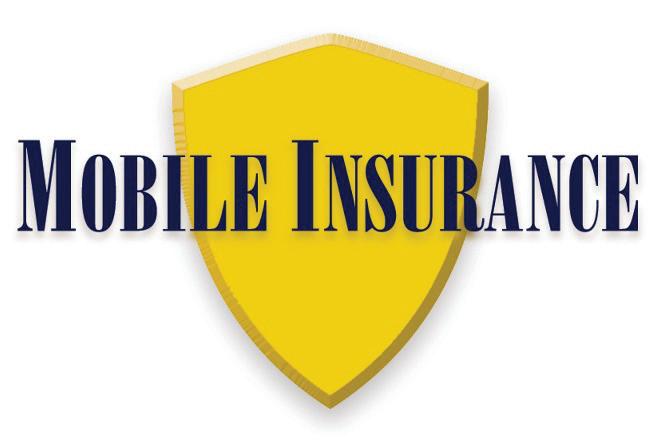




800-458-4320 WWW.MOBILEAGENCY.COM Kurt Kelley, JD/President ser vice@mobileagency.com Great Service * Great Value * Superior Knowledge CALL or visit us ONLINE to see our Special Safety Checklists, Insurance applications and Industry Operating Agreements! Retailers Communities Developers Rental Home Self Storage Facilities
Community Disaster Planning
Your community is marketed to your residents as a safe place to live, promoting peacefulness and security. Your residents chose your community because they feel ‘SAFE’. That is accomplished by providing a place of Stability, Hope, Trust and Compassion. If any of these elements are missing, you have lost your sense of community. It is far easier on a sunny day to assure this than after the lights go off and the power is out, because of local or major disasters. How can you best be a part of returning your customers to their new normal?
The development and implementation of your emergency plan is a simple application of understanding and running this planning wheel, as created by FEMA deep within their Community Risk Reduction concepts. A written accounting of the answers this wheel forces you to ask yourself, when written and organized, represent your entire plan if you have not ever written one before. If you have, apply this wheel to your existing plan, to expose the weaknesses and frm up the expected effectiveness of your existing plan.
One disaster plan does not ft all! Risks vary from property to property in a corporate community structure. Let me explain the steps as you start your process.
Identify Risks – Know your weather threats, often the most frequent risks east of the Rockies. Look above and below. Look external to your community for rail transportation, fault lines, power lines, dry grasslands and fammable forests, nearby rivers and streams, unanchored ground (mud-slides), etc. When you think about it, risks abound. Meet with your local emergency manager to help you identify the risks your communities face. You will be surprised. Write down the risks that each represent.
Prioritize Risks – Assuming life-safety is the highest priority, and disaster resilience is the second, number each risk, while writing how you will lessen the effect of that risk to the best of your knowledge.
Develop Strategies and Tactics to Mitigate Risks – This means you must include this in your budget, since tools of every plan require expenditure. This necessitates a lineitem in your budget annually. Find cross-risk solutions where possible. One solution for one risk type might apply to the others. But be prepared to ask for and spend money. You cannot afford not to, if you want your residents to feel SAFE.
By Brad Huffnes
Prepare the Community Risk Reduction Plan – Write the plan based on your notes, publish it and consider making it available to each resident. Share your plan with your local offce of emergency management. They will appreciate it and fold your plan into theirs. Include a section that applies to your residents so they can prepare themselves. But do not be fooled. Most will not do anything you suggest. They feel too busy to think about it. It is not pleasant, and most will avoid it.
1
Strategicfre.org/crr. This is a simplifed application of the broader concepts of Community Risk Reduction as the author is applying to communities and neighborhoods smaller than their surrounding municipalities

Implement your new Community Safety and Disaster Plan - Part of the implementation is telling new and existing residents about your plan. This will show them your community is as prepared as they can be and makes them feel welcome into your neighborhood.
Monitor, Evaluate and Modify your Plan – Make a part of your plan to review your plan and ‘run the wheel’ annually on a specifc date. Your plan WILL change. Demographics, climate, technology, nearby risks and many other factors change. Note these changes and reprioritize as it is possible. Adjust the written plan and go through each step of the wheel to communicate those changes.
Every emergency and disaster safety plan is a living document. It must be taken off the shelf regularly and reviewed. While there is no such thing as a perfect plan, if you don’t have a written executable plan, you will fnd your community will suffer. Planning doesn’t prevent an emergency incident, but helps keep your emergency from becoming a disaster.
By Brad Huffnes is the VP of Risk Communications for WeatherCall Services / HazardCall, and a 22-year veteran certifed instructor of emergency public information, social media and emergency planning for FEMA and the California Offce of Emergency Services.
As a meteorologist, his knowledge of disasters, both natural and man-made, is extensive. Brad lives in Southern Pines, NC. He can be contacted at bradh@hazardcall.com

July 2018 ISSUE • 281.460.8384 • ManufacturedHousingReview.com - 6 -
Figure
https://

Slashing Energy Costs with Ductless Heating and Cooling Solution Brings Value to Home Owners
In the shore town of Eatontown, NJ, gentrifcation has made affordable housing increasingly diffcult to fnd for lowerincome residents. When the Affordable Housing Alliance (AHA) purchased a manufactured housing park behind the Monmouth Mall, it was faced with the challenge of improving living conditions for residents without increasing their costs. Because utility bills for older units exceeded the cost of rent, the AHA made it their goal to signifcantly reduce utility costs in newer units while encouraging other existing residents to upgrade to an energy-effcient manufactured home.
Utilities costs were a large part of what made older manufactured homes expensive for residents, so the Alliance needed to incorporate solutions that would decrease the costs. At the time, a lack of insulation meant the homes were wasting vast amounts of energy in order to maintain a comfortable temperature. Additionally, residents were paying approximately $400 to $500 per month in utilities and worse, when oil and propane costs were on the rise. The new models needed to be well insulated and have energy effcient and cost-effective utilities.
After receiving funding from the Department of Energy’s Building America Program, The Levy Partnership began coordinating the development of new manufactured homes for the Alliance, including one Zero Net Energy home. The goal of the Zero Net Energy home was to reduce energy consumption to net zero (0). In order to achieve this, the home needed solar panels, which produce sustainable energy, and utilities that were energy effcient. In choosing a heating and air conditioning solution for both the manufactured and Zero Net Energy homes, The Levy Partnership selected Panasonic’s ductless solution, which was able to be installed at Champion Homes’ manufactured housing factory. This means the unit was ready to use once the home arrived on site, saving on installation and production costs.
“Our team wanted more than a vendor when we were selecting a heating and air conditioning solution for this project. We wanted a partner who would collaborate with us to deliver the right solution for Eatontown residents’ energy and comfort needs,” said Jordan Dentz, vice president of the Levy Partnership. “Panasonic’s team provided the technical guidance we needed, plus they have the sleek, low wattage and quiet products to back them up.”
By Victor Flynn
Next Step, a nonproft network that promotes sustainable home ownership, brought the Alliance and Champion Homes together for this project. Once Champion built the homes, Panasonic’s ductless solutions were installed. Because these systems do not require any ductwork, the residents were able to maximize space since thick walls and soffts with ductwork were not required.
While testing in the homes will continue until mid-2018, ductless heating and air conditioning solutions are already proving helpful in contributing to both increased comfort and decreased costs for residents. Of note, utilities bills in the new manufactured homes are now 25 percent of what they were in older units: they dropped to only about $36 to $80 per month for gas and less than $40 per month for electric. As a result, the Alliance achieved one of their primary goals for the project – lower total cost of homeownership for residents.

July 2018 ISSUE • 281.460.8384 • ManufacturedHousingReview.com - 7 -
Victor Flynn is the Senior Product Manager of Panasonic Appliances Air-Conditioning North America You can reach Panasonic at hvac. service@us.panasonic.com, or via their website at us.panasonic.com/ hvac, or 800-851-1235
Thoughts on Mandatory Market Population Levels
In over 20 years of buying and operating manufactured home communities, I’ve been able to determine some important points on market selection. And one of the big ones is the necessity and complexity of proper population levels. Here are my fndings.
Quantity
While giant markets sound great, the truth is that all you have to hit is around 100,000 population to have it all: an active Chamber of Commerce, a robust jobs market, big box retail, every franchise known to man, and plenty of demand for affordable housing. If you really think about it, those huge populations of 1,000,0000 and more are really nothing more than a bunch of 100,000 communities that abut. So while big markets may sound exciting, they are completely unnecessary.
What happens as you get smaller
As markets decline in size lower than 100,000, certain things change. It’s similar to what happens with aircraft. Big planes have multiple back-up systems in the event of a problem. Engine goes out? No problem, they can keep fying on the other two. But smaller markets are like private airplanes. They can still fy fne but they have more limited defenses against problems. So you have to be more careful about markets as size declines. That doesn’t mean that you can’t do great in a market of 25,000 – only that you have to be more careful in your selection.
Quality
Market size is not everything. There is also the issue of the “quality” of the market. A smaller market in Colorado, statistically, is infnitely better than a larger market in Mississippi. It all revolves around the science of the housing market itself. In a Colorado market with median home prices of $300,000, the demand for affordable housing – and the potential for higher rents – is infnitely higher than a market in Louisiana where the median home price is $60,000. That’s why we have invested in so many smaller markets where there are high home prices.
Positive and negative growth observations
Don’t be overly swayed by past and future rates of population increase or decline. There is an unusual phenomenon in the U.S.: in many markets there is very little population growth for the simple reason that there are few children being born. While this is extremely important in many industries, such as the restaurant trade where their revenue is based on total number of meals served, out industry is more reliant on flled housing units, not on how many people are in each home. We get the same lot rent whether the home as fve residents or one. Watch for vacant housing rates that are in-line or lower than the U.S. average of 12.45% as shown on Bestplaces.net.
By Dave Reynolds
The example of a cup with a hole in it
One reason that many investors from the apartment and selfstorage industries panic around smaller markets is that they have been trained to fear markets in which the population is not growing at enormous rates. That’s why they congregate in the Southwest, where high birth rates give rise to high levels of population growth. But here’s the problem with that concept. You can’t build any new manufactured home communities. So you don’t have to have a constant rise in population to keep the existing ones full. With apartments and self-storage, there is a never-ending supply of new developments opening constantly, and you have to have enough new people coming on-line to have a prayer of occupying all of the new product and old product. It’s like a cup with a hole in the bottom, and if you don’t have the tap on full blast, there’s no way to get a drink. But when supply is shut down – as it is in our industry –there’s no hole in the bottom and you can fourish with zero new entrants into the market. It’s kind of like Warren Buffett’s concept of a “moat” on steroids.
Conclusion
I am very comfortable with smaller markets, and not that impressed with giant ones. There is more to great markets than sheer numbers alone. That being said, you have to do terrifc due diligence on any market to make sure it has the raw material you need to succeed. But manufactured home communities can thrive in markets that apartments and selfstorage would fail miserably in, so keep an open mind and stick with science and not urban legend.
Dave Reynolds has been a manufactured home community owner for almost two decades, and currently ranks as part of the 5th largest community owner in the United States, with more than 23,000 lots in 28 states in the Great Plains and Midwest. His books and courses on community acquisitions and management are the top-selling ones in the industry. He is also the founder of the largest listing site for manufactured home communities, MobileHomeParkStore.com.
To learn more about Dave’s views on the manufactured home community industry visit www.MobileHomeUniversity.com.

July 2018 ISSUE • 281.460.8384 • ManufacturedHousingReview.com - 9 -
Why I’d Rather Own a Property in Nebraska Than One in Nevada
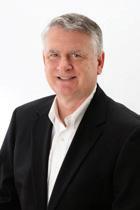
There seems to be confusion on what makes for a good manufactured home community market. Investors who migrate in from the apartment and retail backgrounds are focused on sexy regions that have high levels of population growth and fashy run-ups in housing prices (typically followed by an equally impressive collapse). Personally, I’d much rather own a manufactured home community in Lincoln, Nebraska than Las Vegas, Nevada. Why? For a number of reasons.
Affordable housing supply vs. demand
A recent article in the Washington Post focused on the fact that the demand in Nebraska for affordable housing is so large that employers are unable to hire workers because they can’t fnd suitable housing https://www.washingtonpost. com/news/wonk/wp/2018/06/06/we-try-to-solve-the-greatnebraska-mobile-home-mystery/?noredirect=on&utm_ term=.4e6c0519df1f . While Nevada also shares a need for affordable housing, it’s no where near that hot. The housing vacancy rate, according to BestPlaces.net. is 5% in Lincoln but 14.33% in Las Vegas. That means that Lincoln housing has 70% less vacancy, and that means demand far exceeds supply compared to Las Vegas. This one statistic alone would make me favor Lincoln over Las Vegas. But there’s still much more.
Steady economy
Turn to the unemployment rate section of BestPlaces.net. The unemployment rate in Lincoln is 3% while Las Vegas is 7.2%. That’s a 100% difference. Why is Lincoln so much stronger economically? It’s the way that the economy is constructed (and this is true of virtually all parts of Nebraska). The top ten employers in Lincoln are 1) State of Nebraska 2) public school system 3) University of Nebraska 4) Bryan Health 5) the Federal Government 6) City of Lincoln 7) St. Elizabeth Hospital 8) Burlington Northern Railroad 9) Madonna Hospital and 10) Duncan Aviation. This exactly fts with our ideal employment base, with the majority of jobs coming from the recessionresistant industries of government, education and healthcare. Meanwhile, Las Vegas is built around tourism and gambling, which collapse at every recession. While the shows are better in Vegas than Lincoln, the folks in Nebraska are better suited to pay for the tickets.
Few peaks equal few valleys
There is no question that median home prices in Las Vegas are higher than Lincoln. The Las Vegas median is $201,000 and the Lincoln median is $154,200. And I would be the frst to bet that Las Vegas homes will hit $300,000 before Lincoln ever will, But I also remember when, during the Great Recession, those same home prices fell by 50% in Vegas while they didn’t budge much in Lincoln. Just as a rocket plunges back to earth after liftoff, I prefer markets that are known for stability over freworks.
Less Competition
By Frank Rolfe
Although I love watching a close NBA fnals, I don’t appreciate competition in my business. Very few people ever think about investing in Lincoln, while few people don’t think about Las Vegas. One of the key reasons that Las Vegas has insanely high levels of competition is simple geography: Nevada is very near to California, which is where more real estate investors come from than any other state. At the same time, Nebraska is thought of as only having one investor: Warren Buffett. The cap rates are much lower in Las Vegas as a result – around 20%+ lower than in Lincoln. This translates to much higher deal prices in the land of the Las Vegas strip.
More stable residents
And let’s not forget one of the big differences between manufactured home communities in Lincoln versus those of Las Vegas. We’ve owned both, and the residents are much more transient in nature in Las Vegas. There are many possible causes for this. Lincoln is all about steady jobs in government, education, healthcare and basic industries like agriculture and manufacturing. In Las Vegas, on the other hand, here’s the list of top ten employers 1) MGM Resorts with 54,250 2) Caesar’s with 27,860 3) Station Casinos with 13,000 4) Wynn with 11,729 5) Boyd Gaming with 9,350 6) Sands Casino with 8,630 7) Walmart with 6,475 8) Cosmopolitan with 5,330 9) Valley Health System with 5,267 and 10) Supervalu with 4,024. That means that the Las Vegas economy is all about nothing more than tourism and gaming. Since the longevity of our customers is the hallmark of low operating costs and high levels of pride-of-ownership, then Lincoln beats Las Vegas on this point hands-down.
Conclusion
While it may seem odd to many, I would much prefer to own a manufactured home community in Lincoln, Nebraska over one in Las Vegas, Nevada. The market and residents are more stable, and the law of supply and demand is much more in your favor. While Rod Stewart may never do a show there, you can more than afford to buy a Vegas weekend from your higher Lincoln profts.
Frank Rolfe has been a manufactured home community owner for almost two decades, and currently ranks as part of the 5th largest community owner in the United States, with more than 23,000 lots in 28 states in the Great Plains and Midwest. His books and courses on community acquisitions and management are the top-selling ones in the industry. To learn more about Frank’s views on the manufactured home community industry visit www.MobileHomeUniversity.com.
July 2018 ISSUE • 281.460.8384 • ManufacturedHousingReview.com - 10 -
Home Delivery Prices on the Rise
Many of you buying new manufactured homes these days are noticing not only higher construction prices, but also rising transportation prices. Rates for delivery of multisection homes are worse as they require two separate trucks and sometimes additional escort vehicles. Retailers are reporting freight charges have doubled in some cases in the last two years.
Multiple factors are combining to increase delivery prices. These include:
1. New Department of Transportation regulations regarding how long drivers could be behind the wheel have been implemented. Also, electronic reporting went into effect in January of 2018. Electronic records are more diffcult to manipulate by drivers than were traditional log books. Georgia MHA Executive Director, Jay Hamilton notes, “Prior to January, drivers would make a six-hour drive to your location from a factory, drop off a home, and then drive all the way back ready to make another trip in the morning. They could note in their log book they only drove the maximum limit of eight hours and were pulled by their escort driver the rest of the way whether that was the case. But today, there is no fudging those numbers. Instead, on the way home, the driver has to stop, get a motel room, have dinner then breakfast, and then return half way through the next day. I estimate this issue alone has caused prices to increase 30%. State specifc rules and regulations are often changing too.” Texas MHA Executive Director DJ Pendleton recently and successfully fought a City of Houston rule change that required every home move that was in, or went through the city, to carry a performance bond per trip;

2. Wisconsin Housing Alliance, Executive Director Amy Bliss notes that, “The labor pool has tightened. It’s hard to fnd drivers with a Commercial License that are willing to work and have a good driving record, even for $80,000/year. Mandatory drug testing accompanied with the nation’s drug use epidemic make the labor pool even tighter;”
By Kurt D. Kelley, J.D. Publisher
3. Gas prices have risen about 50% in the past few years. Presuming a typical trip eats up 200 gallons of diesel and the extra cost is $1/gallon, that’s another $200; and
4. Insurance rates are rising for commercial auto use nationwide. There’s two generally accepted causes for this. One, vehicles have more technology and computing systems than before. These systems are fragile and often destroyed even with minor collisions. Secondly, smart phone usage by drivers is contributing to more losses. Even professional drivers not using smart phones are at peril when passenger car drivers are making mistakes which trucks with twenty-ton cargos can’t avoid.
To better manage your transportation rates, address the issue with your factory. They should be able to explain their rate charging system. You can at least verify the mileage to and from your location as many factories charge per mile. Also, most factories allow you the option of contracting your delivery separately. If you know of a quality transporter that’s properly insured, seek quotes from them.
By Kurt D. Kelley, J.D., Publisher of the Manufactured Housing Review and President of Mobile Insurance. 281-367-9266, x 117 or Kurt@ mobileagency.com
July 2018 ISSUE • 281.460.8384 • ManufacturedHousingReview.com - 11 -
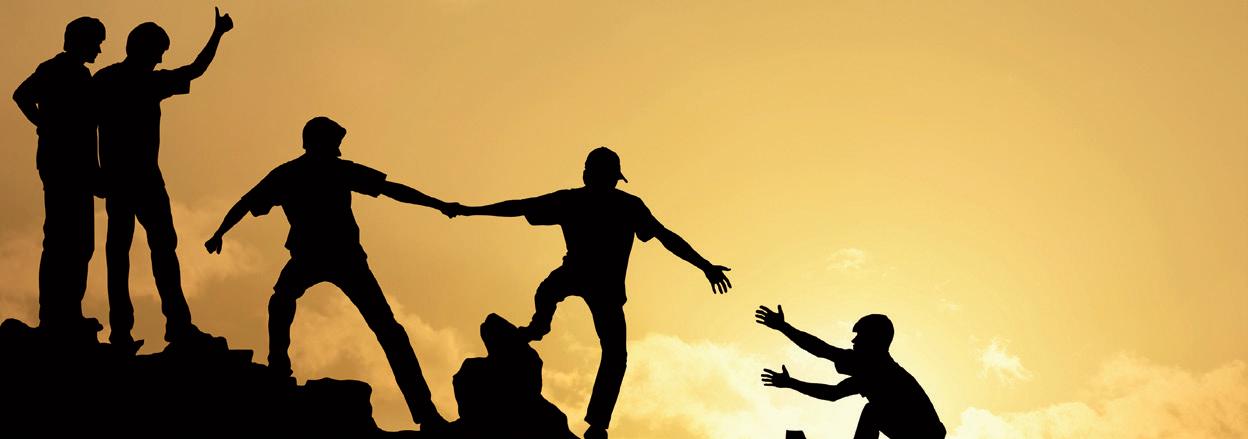
www.stylecrestinc.com | 800.945.4440 We go the extra mile. Committed to your success Our dedicated sales and distribution teams help you every step of the way, ensuring you receive the right products at the right time. SUPPLIER OF THE YEAR 2018 1996 | 1998 | 1999 | 2014 | 2015 | 2017 HVAC | Foundation Covers | Doors & Windows | Steps & Rails | Setup Materials | Plumbing | Electrical
National Elections Outlook for Fall of 2018
At least three reasons suggest the Democrats should be optimistic about taking control of the House this November.
First, the party controlling the White House typically loses seats in mid-terms. These include “tidal waves” against the president’s party like in 1994 and 2010, when newly-elected presidents Bill Clinton and Barack Obama watched their parties lose 54 and 63 seats, respectively. Yes, 2002 was an exception, when the GOP gained 8 seats under President Bush. But that was after 9/11 when the nation was focused on national security, where the GOP had a signifcant advantage.
The second is the number of House Republicans who have announced retirements since the last election – 40+ at last count. Some read this as a sign of low confdence in retaining control.
The third reason is that in special congressional elections in 2017-18, Democrats have typically outperformed by about 16 percentage points compared to what they normally do.
Yet the President’s job approval rating has improved this year. Last December, his approval was at an all-time low of 37%; now it’s above 43%.
The last time the Democrats won the House from the GOP was in 2006. Back then, in early July, they were winning in the “generic ballot” (the poll that asks which party you’d rather control the House) by 12 points; now they’re winning by about 6 points. In other words, 2006 this is not, at least not yet.
It still looks like the Democrats are going to pick up some seats in the House, but it also looks like the Blue Wave crested early, so a tidal wave is unlikely. Instead, it looks like it will go down to the wire, and we give the Republicans a very slight edge, although we wouldn’t be shocked by a narrow Democratic victory, either. It’s even possible the GOP loses but a handful of seats.
Meanwhile, Republicans are in good shape in the Senate. Currently, the GOP has a slight 51-49 edge over the Democrats. But, of the 35 Senate seats contested in November, the Democrats already occupy 26, while Republicans have only 9, giving the Democrats few opportunities to make gains.
By Brian S. Wesbury
Even worse for the Democrats is having fve incumbents running in states Trump easily won by double-digit margins. By contrast, the only vulnerable Republican seats are in Nevada, which Trump lost by just 2 points, Arizona, where he won by 3.5 points, and Tennessee, where he won by 26 points. As a result, we think the Republicans will probably gain two seats in the Senate this year.
If we’re right, with one party narrowly controlling the House and the GOP enlarging their majority in the Senate, it will be a tougher legislative environment for the president. But the Senate controls appointments to the Courts and agencies and, as long as the president can keep his own party in-line, he will have broad discretion to pick who he wants.
This means the deregulatory agenda stays on track, which will be a tailwind for equity investors and the economy in the next two years. At the same time, tax cuts won’t be repealed and there is little change to the outlook for spending, either pro or con. The political environment is changing, but the investing environment remains positive.
By Brian S. Wesbury, Chief Economist and Robert Stein, Deputy Chief Economist at First Trust Advisors, LP in Wheaton, IL
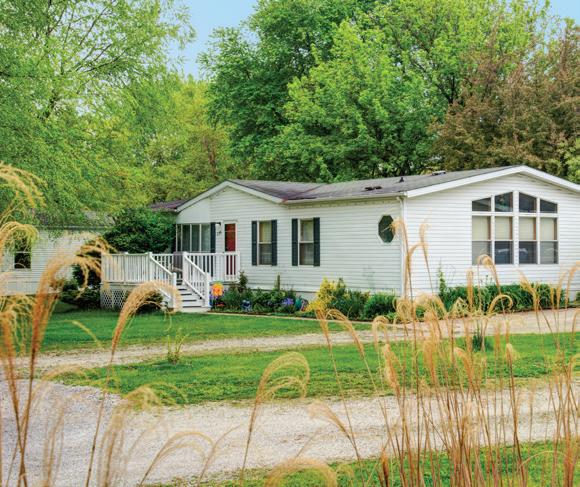

July 2018 ISSUE • 281.460.8384 • ManufacturedHousingReview.com - 13 -
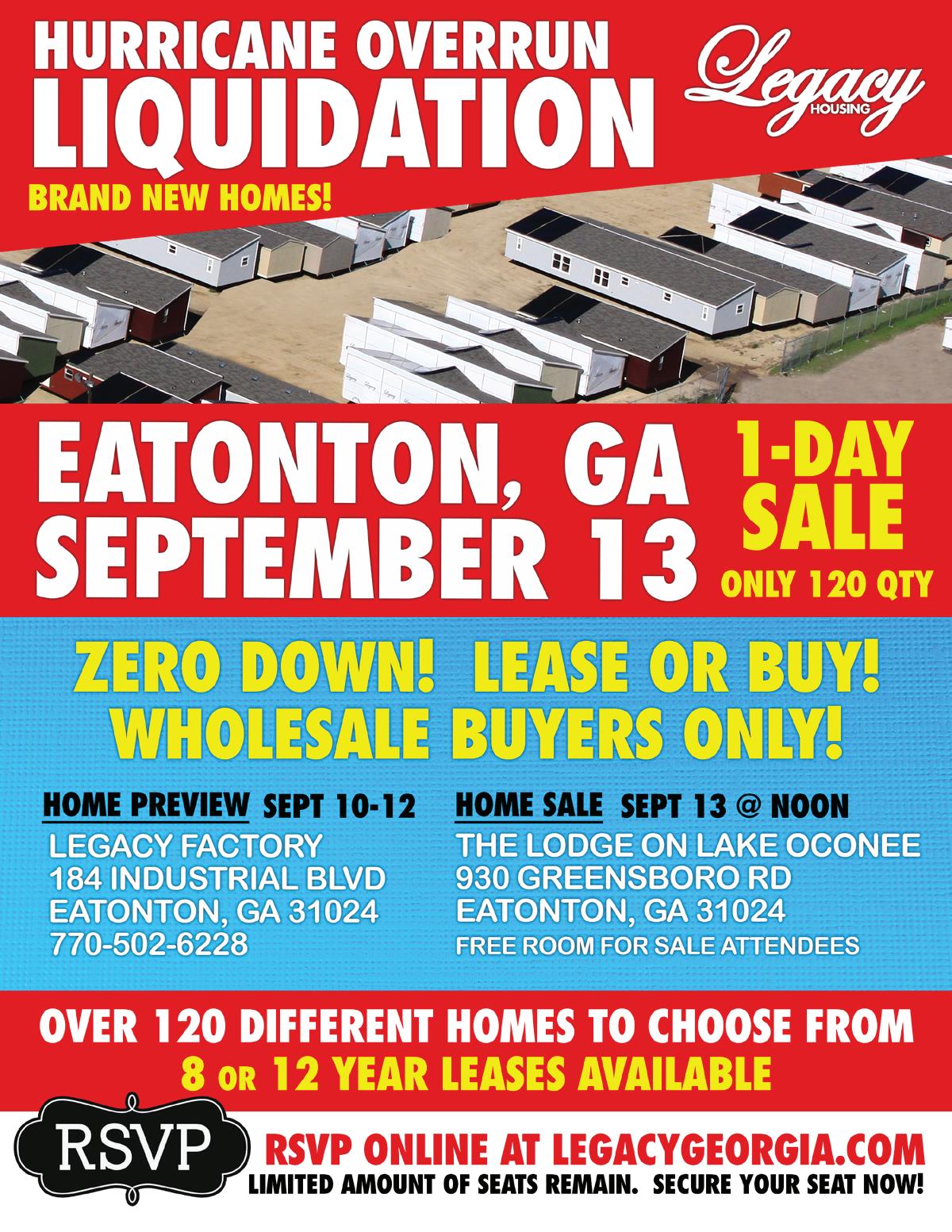
New Manufacturer Opening in Waco, Texas
Former Executive at Clayton Homes, David Jessup, who also served as Chairman of the Texas Manufactured Housing Association, is opening Jessup Manufactured Housing, LLC in Waco Texas. The new HUD code manufactured home plant will be located in Waco, Texas. The location is going to be near West Loop 340 just south of town. The initial plan is to hire 150 employees by the end of the year and ramp up to over 200 by 2020.
The new plant is welcomed by McClennan County who approved a $850,000 economic development package to support this new venture. Jessup Manufactured Housing will be occupying the plant previously used to produce manufactured homes by Patriot Homes. The plan is to specialize in single section homes and offer them to independent retailers in Texas and the surrounding states. Jessup reports his target market are frst time buyers struggling to pay the infated prices of site-built homes.
By Della Holland
The new plant comes at a time when deliveries of new homes to retailers are often taking four or more months in the South Central United States. Many retailers and community owners have been reporting it’s hard to acquire adequate inventory on a timely basis. The new plant follows the highly successful opening of Legacy Homes by Kenny Shipley in Fort Worth and Mount Pleasant some years ago.
You can reach Jessup Manufactured Housing by contacting: Scott Cannon at 254-235-0222 or scott.cannon@jessuphousing.com
Ms. Holland is an Editor for the Manufactured Housing Review. She owns and operates real estate investments and acts as an Administrative V.P. in the Manufactured Housing Industry.

July 2018 ISSUE • 281.460.8384 • ManufacturedHousingReview.com - 15 -
Grayslake’s Saddlebrook Farms Receives Community of the Year Award
Recognized as One of the Top Land-Lease/Manufactured Home Communities in Illinois
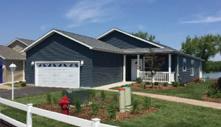
Affordable housing is not out of reach for Illinois residents. Many families are fnding new homes in manufactured housing communities that offer modern construction, ideal locations, and desirable amenities. Saddlebrook Farms in Grayslake was recently recognized as one of the best communities in Illinois.
The Illinois Manufactured Housing Association (IMHA) awards Saddlebrook Farms -- of Hometown America Management Corporation -- its 2018 Land Lease Community of the Year.

This recognition exemplifes the best of Illinois Manufactured Housing and land-leased communities for their site plans, community amenities, continuous improvement, and relations within and outside the property. The vote was determined by more than 1,000 members of IMHA.
“Saddlebrook Farms stands out in our Association as a vibrant community with active residents and responsive management. In addition, the community is beautifully planned out on 100-plus acres of lakefront property,” says Frank Bowman, Executive Director of IMHA.

T
his 55+ community in Grayslake was built in 1989. Larry Waco, Director of Operations and Community Manager, has been involved with the property from nearly the beginning. “This community has always been a tremendous value for homeowners,” says Waco. “Many of our residents came here
to downsize from their former living space while maintaining many aspects of their lifestyle… they’re achieving this here.” With more than 1,700 ranch-style sites, Saddlebrook Farm residents enjoy an onsite library, lakeside recreation center, community gardens, wooded walking paths, and countless affnity clubs. A new 4,400 square ft. ftness center was added in 2015, along with a lakeside picnic pavilion. “We have a very active and relational community and many residents have extended family nearby. We’re constantly looking for ways to enhance everyone’s experience in the community,” adds Waco.
IMHA, serves as the voice and authority on all segments of the market… more than 600 active members, including: manufacturers, installers, contractors, lenders, and homeowners. Contact Vanessa, at the Illinois Manufactured Housing Association 312.699.3944 / vanessa@orlypr. com for a personal tour of this wonderful community
July 2018 ISSUE • 281.460.8384 • ManufacturedHousingReview.com - 16 -
Restoring the Rule of Law to Manufactured Housing Regulation
The rule of law, and the supremacy of law over the arbitrary whims of individuals who happen to wield government power, was a profound concern for the founders who debated and developed the Constitution of the United States. For over two centuries, legal scholars have pointed to the primacy of the “rule of law” in the system of limited government and defned powers established by the Constitution, stating, for example: “The rule of law may be the most signifcant and infuential accomplishment of Western constitutional thinking. The very meaning and structure of our Constitution embody this principle. Nowhere expressed yet evident throughout the Constitution, this bedrock concept is the frst principle on which the American legal and political system was built.”
For too long, though, the rule of law, as envisioned by the nation’s founders, has been undermined, ignored, or bypassed by the so-called “Fourth Branch” of government – the permanent, overgrown and largely unaccountable bureaucracy that has ballooned within the federal government, often in concert with overpaid and largely unaccountable government contractors. While this is a major socio-political issue with ramifcations that extend far beyond the scope of this column, federallyregulated manufactured housing faces challenges of its own regarding the rule of law, and with a new Administration – with a new regulatory philosophy -- now in place, there is no time like the present to clearly address this issue within the unique context of manufactured housing regulation.
In the manufactured housing arena, the most fundamental expression of the primacy of the rule of law is the Manufactured Housing Improvement Act of 2000. Indeed, the 2000 reform law is a direct outgrowth of – and a direct congressional response to and remedy for – administrative abuses that had piled-up within the federal manufactured housing program over the frst quarter-century of its existence. These included, but by no means were limited to: (1) de facto rulemaking by “interpretation;” (2) circumventing, evading, or ignoring notice and comment requirements; (3) abuses of the “Interpretive Bulletin” process; (4) closed-door standards development activity; (5) non-consensus standards development; (6) contracting abuses resulting in a non-competitive, de facto “sole-source” program monitoring contract, the same monitoring contractor for the (now) entire 40-year-plus history of the program, and the delegation of governmental power to an unaccountable private entity; and (7) activity to subvert the operation and objectivity of the former Manufactured Housing Advisory Council, and a host of other actions that undermined the basic fairness, reasonableness and, ultimately, legitimacy of the federal manufactured housing program.
By Mark Weiss
Taking cognizance of these (and other) serious program failings, Congress incorporated multiple protections in the 2000 reform law designed to restore and enhance the program’s compliance with – and adherence to – the rule of law, as refected in the basic due process norms and substantive protections included in the original 1974 manufactured housing act. In large measure, then, the 2000 reform law is: (1) a refection of Congress’ concern over program abuses which had – and continue to -- unnecessarily limit the use and availability of affordable manufactured housing for millions of Americans and the growth of the industry; as well as (2) a compendium of targeted remedies designed to halt, cure and reverse those abuses.
As a result, the 2000 reform law, among many other things: (1) established a balanced Manufactured Housing Consensus Committee (MHCC) and consensus process to develop and update consensus standards and program enforcement regulations; (2) reiterated and strengthened notice and comment requirements for all standards, regulations and “Interpretive Bulletins;” and (3) made the consensus process and notice and comment, “mandatory” absent a statutorilydefned “emergency.” Moreover, to make sure that no-one misunderstood the extremely broad scope of the review and approval authority of the MHCC and the other due process protections incorporated in the 2000 reform law, Congress included what is commonly known as a “catchall” provision in the section of the law that establishes the MHCC and defnes the scope of its powers. The specifc – and specifcally targeted -- purpose of that provision, was to ensure that HUD regulators would not fall back on their established practice of bypassing notice and comment rulemaking (and consensus committee review and approval under the new 2000 law) by the simple expedient of calling new (or modifed) de facto standards and/or regulations by some other name, whether it be an “interpretation,” “guidance,” a “policy statement,” or some other moniker not mentioned as requiring rulemaking in either the original 1974 law or the federal Administrative Procedure Act (APA). That “catchall” provision is section 604(b)(6) of the 2000 reform law.
Section 604(b)(6), as MHARR has written and observed many times before, is straightforward and unequivocal. It provides that: “Any statement of policies, practices, or procedures relating to construction and safety standards, regulations, inspections, monitoring, or other enforcement activities that constitutes a statement of general or particular applicability to implement, interpret, or prescribe law or policy by the Secretary is subject to subsection (a) or this subsection. Any change adopted in violation of subsection (a) or this subsection is void.” (Emphasis added). The “subsection (a)” that is referred
July 2018 ISSUE • 281.460.8384 • ManufacturedHousingReview.com - 17 -
Restoring the Rule of Law to Manufactured Housing Regulation Cont.
to, is the part of the 2000 reform law (i.e., section 604(a)) which requires MHCC consideration and approval of new or modifed standards and their publication by HUD for notice and comment, among other things. Effectively then, section 604(b)(6) requires the same procedural safeguards mandated by the 2000 reform law for standards and regulations, to be applied with equal force to “any” change to HUD’s policies, practices, or procedures relating to either the standards, the regulations, monitoring, inspections or virtually any other aspect of standards-setting and enforcement in an extremely broad, inclusive and comprehensive way.
Through this language, Congress sought to ensure the rule of law, rather than administrative fat, in connection with manufactured housing regulation, in order to preserve the core purposes of the 1974 law as amended – i.e., to ensure the availability and affordability of manufactured housing for all Americans, and to avoid arbitrary, capricious, excessive and/ or unnecessary regulation that would undermine or interfere with those objectives. Or at least, that was the idea.
It did not take long, though, for HUD to start backtracking on section 604(b)(6), with a campaign designed: (1) to frst limit its application and scope; (2) to subsequently read it out of the 2000 reform law entirely; and (3) having accomplished that, revert to the type of “sub-regulatory” actions and practices that section 604(b)(6) was designed to stop in the frst place.
The frst salvo in the war over section 604(b)(6) came in February 2004, in the form of a letter from the MHCC to HUD, asking the Department to confrm the broad scope and applicability of the MHCC’s review authority under section 604. The MHCC stated, in part: “It is the Committee’s opinion that the terms ‘procedural and enforcement regulations’ cited in subsections 604(b)(1) and (2) and ‘procedural or enforcement regulations’ cited in subsection 604(b)(3) refer to ‘any … regulations, inspections, monitoring or other enforcement activities that constitutes a statement of general or particular applicability to implement, interpret, or prescribe law or policy be the Secretary,’ as stipulated in section 604(b)(6), and, as such, must be submitted to the Committee….” (Emphasis added). HUD responded, however, in May 2004, with a fve-page tome which drastically curtailed the role and authority of the MHCC. HUD’s opinion letter concluded that section 604(b)(6) – directly contrary to its clear and unequivocal language -- rather than constituting a broad “catchall” provision, designed to bring most program activities within the scope of the MHCC’s consensus review and recommendation role, was actually designed to limit the scope of section 604 to an extremely narrow category of HUD “statements on the construction and safety standards and [their] enforcement,” thereby excluding all of the sub-regulatory “interpretations” and other pseudo-regulatory statements and activity that section 604(b)(6), by its plain language, was actually designed and intended to embrace.
Matters, though, only got worse from there. In February 2010, HUD published an “interpretive rule” – without opportunity for notice and comment -- which further slashed the scope and applicability of section 604(b)(6), to the point that it was effectively read out of the law, concluding that section 604(b) (6) applies only to HUD statements and actions that would constitute a “rule” within the meaning of the APA in any event. This position, however – as MHARR noted at the time and many times since -- stands the law on its head and violates a basic rule of statutory construction which prohibits interpretations that would nullify either all – or any part – of an enactment of Congress. Put differently, since the APA already requires notice and comment for APA “rules,” construing section 604(b)(6) to require notice and comment only for APA rules is redundant and renders section 604(b)(6) – and Congress’ action in adopting that section – meaningless, in violation of settled law concerning statutory interpretation.
The damage had been done, though, and the 2010 interpretive rule, in particular, opened the foodgates for a wave – or, more accurately, food -- of new sub-regulatory and pseudo-regulatory program actions (i.e., at least 14 “guidance” memoranda between 2014 and 2016 alone, not counting “monitoring”-related “guidance”) that imposed new and/or expanded mandates on regulated parties including, most signifcantly, wholesale changes to the Subpart I-related “monitoring” function, based on a new/modifed “focus” that shifted from the detection of specifc alleged standards violations, to a broader concentration on “quality control,” at a time when industry production was rapidly declining. This had the effect of maintaining and even increasing contractor work hours and compensation (as previously detailed by MHARR) while resulting in needlessly higher regulatory compliance costs for manufacturers and, ultimately, consumers – not a single part of which was ever considered by the statutory consensus committee or subject to notice and comment rulemaking.
The HUD program, accordingly, has spent much of the past decade operating outside of the rule of law, in direct violation of the clear language of its own authorizing statute, exercising authority it was never granted by Congress, in ways that were never authorized by Congress, while giving short-shrift to the statutory MHCC, all to the detriment of the industry – and particularly its smaller businesses – and the millions of Americans in need of affordable, non-subsidized home ownership.
Just as importantly, through nearly every step of this decadeplus subversion of the 2000 reform law, “deep state” regulators at HUD have been aided and abetted by “institutional” program contractors – i.e., de facto sole-source contractors, such as the program monitoring contractor – which constitute a “deep state” of their very own, wielding unlawfully-delegated and largely unaccountable governmental power, together with a built-in incentive to continually expand both the scope
July 2018 ISSUE • 281.460.8384 • ManufacturedHousingReview.com - 18 -
Restoring the Rule of Law to Manufactured Housing Regulation Cont.
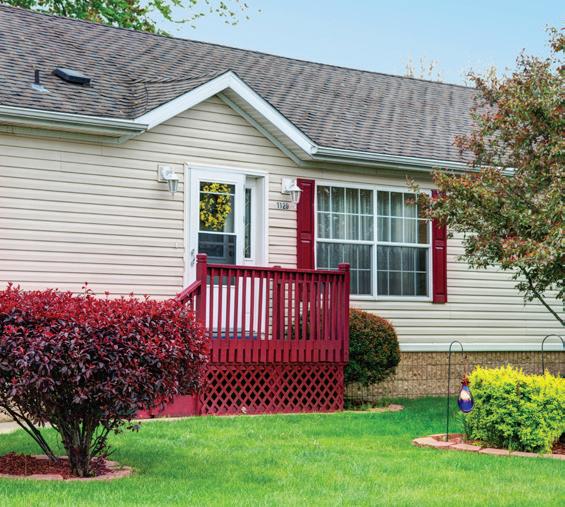
and cost of regulation, thereby increasing their own power and infuence and, not surprisingly, their contract revenues. This needless regulatory expansion, in itself, has excluded hundreds-of-thousands of Americans from the benefts of manufactured home ownership, based on studies conducted by the National Association of Home Builders (NAHB), and has unnecessarily slowed and stunted the industry’s recovery from its modern production low in 2009, disproportionately harming smaller industry businesses. Nor does the industry itself escape part of the blame for this activity, as far too many of its largest corporate conglomerates – and their representatives -- have provided protection and “cover” for the HUD status quo and program “leaders” who have gone to extraordinary lengths to undermine the most important elements of the 2000 reform law.
The change in presidential administrations, however, has opened the door to potential remedies for this fundamentally lawless regulatory activity. In particular, the Trump Administration’s “top-to-bottom” review of HUD’s manufactured housing regulations and “regulatory activities,” under Executive Orders 13771 (“Reducing Regulation and Controlling Regulatory Costs”) and 13777 (“Enforcing the Regulatory Reform Agenda”) provides a viable basis for action to repeal both the 2010 HUD interpretive rule and the slew of “feld guidance” and other sub-regulatory mandates issued by HUD based on the Department’s unlawful construction of section 604(b)(6). And indeed, MHARR in its February 20, 2018 regulatory review comments to HUD, specifcally urged the program to return to the rule of law, through the withdrawal of the 2010 interpretive rule and all of the program’s subregulatory mandates issued without MHCC consideration and notice and comment rulemaking.
This effort, moreover, received a major boost when the U.S. Department of Justice notifed federal agencies, through memoranda issued on November 16, 2017 and January 25, 2018, that it would no longer enforce administrative “guidance” documents issued without notice and comment rulemaking. In part, the Justice Department stated: “Guidance documents cannot create biding requirements that do not already exist by statute or regulation. Accordingly … the [Justice] Department may not use its enforcement authority to effectively convert agency guidance documents into binding rules. Likewise, Department litigators may not use noncompliance with guidance documents as a basis for proving violations of applicable law….”

Based on these memoranda, MHARR fled a separate request with HUD on April 25, 2018, reiterating its call for the withdrawal of the 2010 interpretive rule and all HUD manufactured housing “guidance” documents imposed without notice and comment rulemaking (and/or proper MHCC review), stating:
“[A]s is demonstrated by the November 16, 2017 and January 25, 2018 memoranda, the Justice Department would quite properly refuse to enforce any such guidance documents issued without rulemaking and prior MHCC consensus review … in any type of enforcement proceeding sought be HUD, in any event. Accordingly, rather than leaving those unenforceable ‘guidance’ documents on the public record … those ‘guidance’ documents … should be declared null and void in accordance with section 604(b)(6) and formally withdrawn.”
As MHARR has observed, the time has come for HUD to restore the rule of law to the manufactured housing program and to fnally obey the 2000 reform law as written. The pending EO 13771/13777 regulatory review process provides the perfect opportunity for HUD to fnally and formally renounce its past lawlessness and withdraw both the 2010 interpretive rule and the invalid sub-regulatory “guidance” documents issued pursuant to that “rule.” The legitimacy of the federal program – and the rule of law – demand no less.
Mark Weiss
MHARR is a Washington, D.C.-based national trade association representing the views and interests of independent producers of federallyregulated manufactured housing.
“MHARR-Issues and Perspectives” is available for re-publication in full (i.e., without alteration or substantive modifcation) without further permission and with proper attribution to MHARR.
July 2018 ISSUE • 281.460.8384 • ManufacturedHousingReview.com - 19 -
Selling New Homes in a Community with Limited Inventory
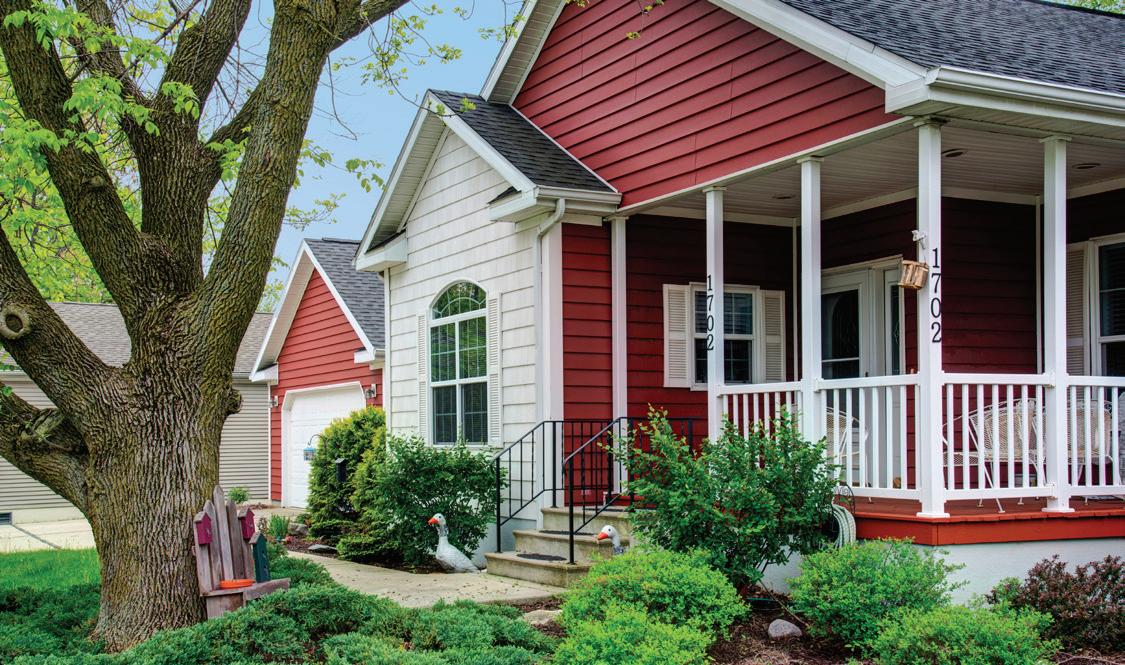
It’s not fnancially or physically practical for the average mobile home park to carry ten plus new home models to show to respective residents. Because of this, we’ve selected a few of our favorite models to keep in inventory. These include two 2 bedroom single section homes and one 3 bedroom multi-section home.
Recently, a prospective home owner responded to the Craigslist Ad we run locally. She appeared to be a good candidate, however her fnances wouldn’t support the purchase of any of the inventory homes we have set up in the community.
Fortunately, The Clayton Plant out of Savannah, our home provider, and their factory representative, Blake Gibbs, offer video tours of all their models and foor plans. With the beneft of a video conference room we set up at Mountain View Estates, our prospective home owner was able to view a large inventory of available homes. This feature increases our abilities to sell new homes and fll empty home sites.
By David Roden
As for our limited fnancial resource home buying candidate, she’s close to closing on a new home with us. Better yet, she’s telling her family and friends from work, church, and social gatherings about our park and all the homes we have to offer.
If you’re like our park, Mountain View Estates, but carrying a huge inventory of new homes isn’t an option, contact your home supplier about available video tours of their inventory. Ask them about sales training and sales aids which may be available. Community owners who offer this video inventory feature will soon reap the benefts. Feel free to reach out to me or come by Mountain View Estates and see for yourself.
David and his wife Judy are owners of Mountain View Estates, a manufactured home community in Georgia. David is known for sharing his good infll and community management advice with other community owners, as well as being one of the founding partners of the Southeast Community Owners (SECO) event held each Fall in the Atlanta Area. Davidroden@yahoo.com
July 2018 ISSUE • 281.460.8384 • ManufacturedHousingReview.com - 20 -
MHR MANUFACTURED HOUSING REVIEW We are an electronically delivered monthly magazine focused on the Manufactured Housing Industry. From Manufactured Home Community Managers, to Retailers, to Manufacturers, and all those that supply and service them, we supply news and educational articles that help them run their businesses. 281.460.8384 ManufacturedHousingReview.com Communications regarding any alleged offending, inappropriate, inaccurate or infringing content should be directed immediately to kkelley@manufacturedhousingreview.com along with the communicator’s contact information. Have something to contribute or advertise? Email us at staff@manufacturedhousingreview.com



























